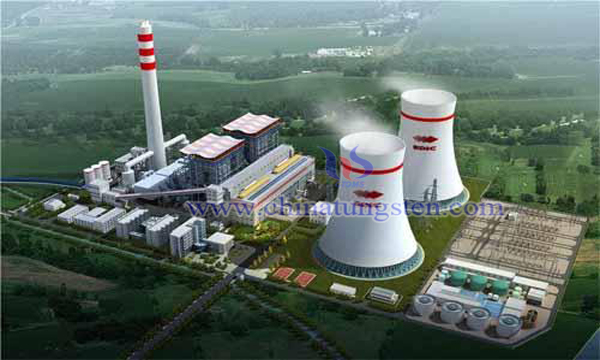Mesoporous Cerium-Tungsten-Aluminium Composite Oxide Supported Denitrification Catalyst
- Details
- Category: Tungsten Information
- Published on Tuesday, 30 April 2019 17:02
- Hits: 589
Nitrogen oxides (NOx) emitted from coal-fired power plants are recognized as one of the three major atmospheric pollutants, which can cause environmental problems such as acid rain, ozone layer destruction, greenhouse effect, and seriously endanger the earth's ecological environment and human health.

Nowadays, the most popular technology of flue gas denitrification is selective catalytic reduction (SCR) with NH3 as reducing agent, which uses NH3 to reduce NOx to harmless N2 and H2. The core of SCR denitrification technology is high activity and high stability catalyst. At present, metal oxide catalysts are widely used, mainly supported on titanium dioxide and supported on V2O5-WO3, which is commonly referred to as titanium vanadium tungsten catalysts.
Some scholars believe that there are some problems in the industrial application of the above catalysts, such as the narrow window of low temperature catalytic activity difference and the highly toxic active component vanadium. Therefore, it is necessary to develop a new SCR denitrification catalyst with high activity at low temperature, wide window of catalytic temperature and friendly environment.
Because the main body of denitrification catalyst is composed of catalyst carrier, which accounts for the vast majority of the total quality of catalyst, its performance is directly related to the removal rate of nitrogen oxides. Therefore, the performance of denitrification catalyst carrier is particularly important. In order to overcome the shortcomings of existing titanium carriers, scientists are studying a denitrification catalyst based on mesoporous cerium-tungsten-aluminium composite oxide carriers, which can expose more active components to the surface of the catalyst, thus improving the denitrification activity of the catalyst and broadening the window of the catalytic activity temperature. The synthesis process of the carrier includes:
1.0g P123 was dissolved in 30mL absolute ethanol, then 0.8g citric acid, 3.8g aluminium nitrate, 0.2g cerium nitrate and 0.2g phosphotungstic acid were added to the above solution, coated with PE film, stirred vigorously for 6h, then the sample was put into oven, aged for 3 days at 50 ℃, and then calcined in muffle oven at 500 ℃ for 4h, then mesoporous cerium-tungsten-aluminium composite oxide carrier was obtained.
According to the method of isovolumetric impregnation, 0.14g manganese nitrate was dissolved in deionized water, 0.57g mesoporous cerium tungsten aluminium composite oxide carrier was added to the above-mentioned solution of manganese nitrate, stirred in water bath at 50 for 10 h, then the sample was put into oven, dried at 70 for 10 h, and roasted at 400 for 3 h (the program heating rate is 0.5 / min), that is, mesoporous cerium tungsten aluminium composite oxide supported denitrification catalyst was obtained.
Catalyst evaluation: The prepared catalyst was grinded and screened, 40-60 mesh particles were taken and put into a fixed-bed tubular reactor. The inner diameter of the reactor was 12 mm, and the temperature of the program was raised to the required reaction temperature to test the catalytic activity. The simulated flue gas consists of N2, O2, NO and NH3, of which NO 500 ppm, NH3 500 ppm, O2 concentration 3%, equilibrium gas N2. The simulated flue gas was fed into the reactor and the space velocity was controlled at 30 000 h-1. The conversion of NO was stable at over 70% at 200-300 ℃.
- Tungsten Oxide Manufacturer & Supplier, Chinatungsten Online: www.tungsten-oxide.com
- Tungsten News & Prices of China Tungsten Industry Association: www.ctia.com.cn
- Molybdenum News & Price: news.molybdenum.com.cn
- Tel.: 86 592 5129696; Fax: 86 592 5129797; Email: sales@chinatungsten.com



 sales@chinatungsten.com
sales@chinatungsten.com